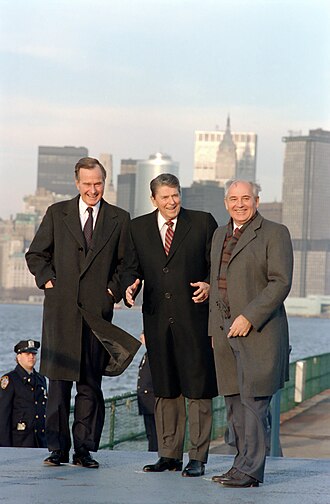Introduction
Since the Cold War's final chapter in the late 1980s, U.S.–Russia summits have served as crucial inflection points in global politics. From nuclear disarmament agreements to diplomatic resets and modern conflicts like the Ukraine war, these summits reflect not just bilateral relations, but the state of the world order itself.
The 2025 Trump–Putin summit in Alaska, the first held on American soil in nearly four decades, draws historical weight from a long line of significant diplomatic meetings. Here's a full timeline and contextual history of U.S.–Russia (and U.S.–Soviet) summits since 1988.
Timeline: Key U.S.–Russia Summits (1988–2025)
1988 – Reagan–Gorbachev Summit, Governors Island, New York
- The last summit on U.S. soil before 2025
- Marked the symbolic closing of Cold War hostilities
- Set the stage for a peaceful Soviet collapse and arms control agreements
1989 – Malta Summit: George H. W. Bush and Gorbachev
- Held aboard warships off Malta
- Widely regarded as the meeting that declared the Cold War’s end
1991 – Moscow Summit: Bush and Gorbachev/Yeltsin
- Finalized the START I Treaty, reducing nuclear arsenals
- Transitioned from the Soviet Union to the Russian Federation
1993 – Clinton–Yeltsin Vancouver Summit
- Focused on economic aid to Russia
- Reinforced U.S. support for post-Soviet democracy and reforms
2001 – Bush–Putin Slovenia Summit
- Marked the beginning of a more personal relationship
- President George W. Bush remarked he "looked into Putin’s soul"
2005 – Slovakia Summit: Bush and Putin Clash
- Covered human rights and democratic backsliding in Russia
- Signaled growing friction despite cooperation on counterterrorism
2009–2010 – Obama and Medvedev Reset Diplomacy
- Multiple meetings in London, Moscow, and Prague
- Signed the New START Treaty, renewing arms control frameworks
2014 – Breakdown After Crimea
- Russia’s annexation of Crimea ended diplomatic progress
- The U.S. imposed sanctions and canceled summit-level engagements
2018 – Trump–Putin Helsinki Summit
- Trump drew bipartisan criticism for appearing to side with Putin over U.S. intelligence
- Focused on Syria, nuclear issues, and election interference allegations
2021 – Biden–Putin Geneva Summit
- Aimed at stabilizing relations post-Crimea and election tensions
- Included discussions on cybersecurity, arms control, and diplomatic personnel
2025 – Riyadh Backchannel Summit (February)
- Conducted in Saudi Arabia with lower-level diplomats
- Laid groundwork for the more formal Alaska meeting
2025 – Trump–Putin Alaska Summit (August)
- First full-scale U.S.–Russia summit on American soil since 1988
- Focused on the Ukraine ceasefire, territorial discussions, and future multilateral negotiations
- Taking place at Joint Base Elmendorf–Richardson in Anchorage
Why These Summits Matter
Each summit reflects a larger geopolitical moment:
- End of Cold War: 1988–1991 summits shaped the peaceful transition from the Soviet Union
- Arms Control & Nuclear Disarmament: START treaties remain pillars of global security
- Human Rights and Democracy: Especially visible in Bush–Putin and Obama–Medvedev talks
- Cybersecurity and Interference: Key in more recent summits post-2016
- War and Peace Talks: As seen now in 2025, where Ukraine and global stability are at stake
Conclusion: The Long Road to Alaska
The Trump–Putin 2025 summit in Alaska isn’t just a one-off diplomatic event. It stands atop nearly four decades of strategic dialogue, crises, breakthroughs, and breakdowns. From Cold War rivals to uneasy nuclear partners, the U.S. and Russia have used summits to test, reset, and redefine their global roles.
As world leaders meet again on American soil, history reminds us that diplomacy is never isolated. It is always built on what came before. The outcomes in Anchorage may shape the next chapter in this enduring and volatile relationship.



